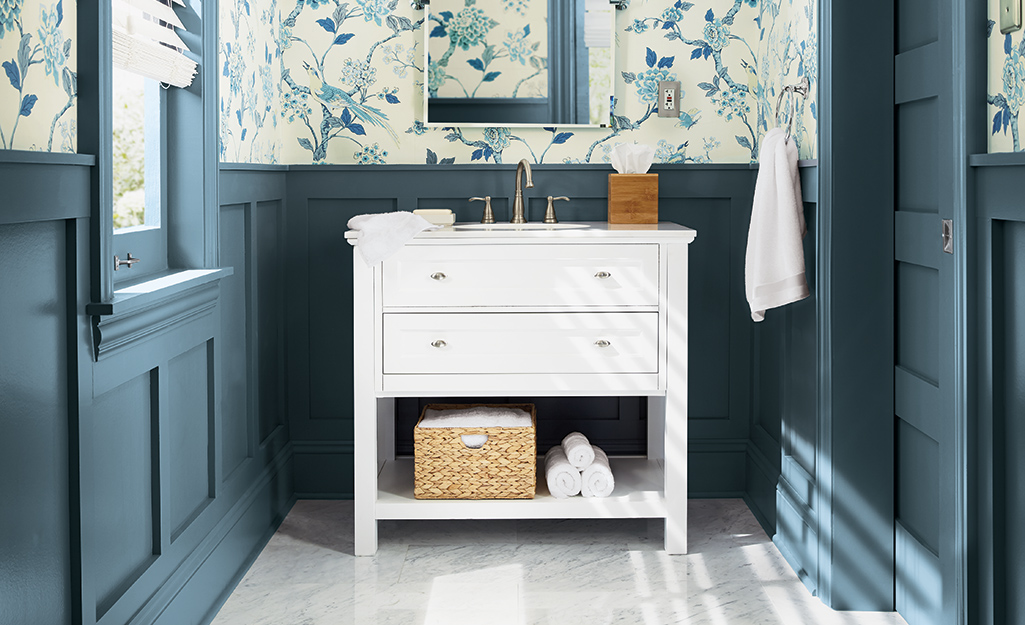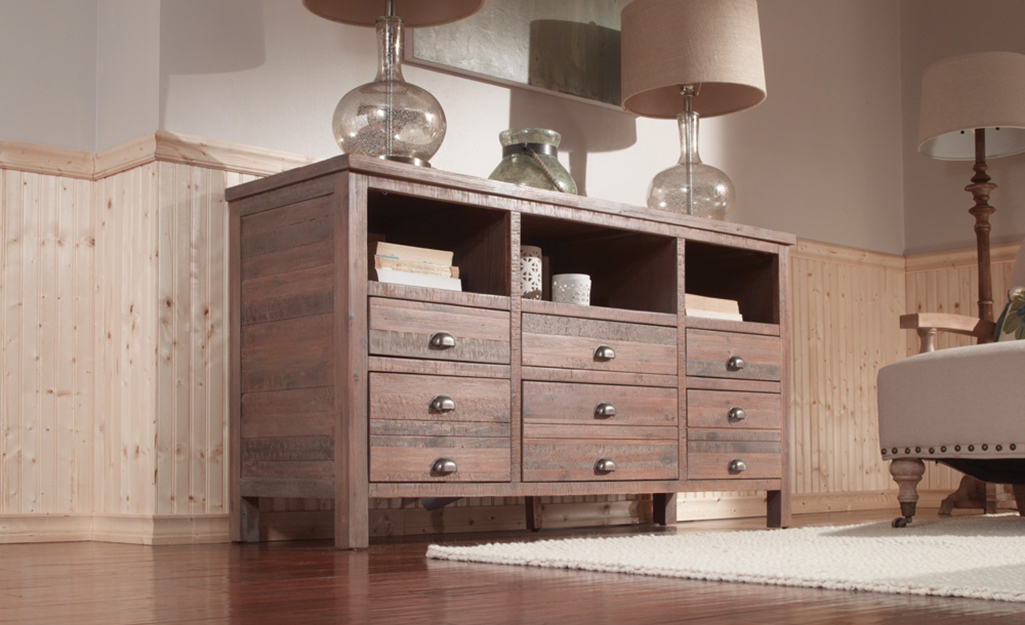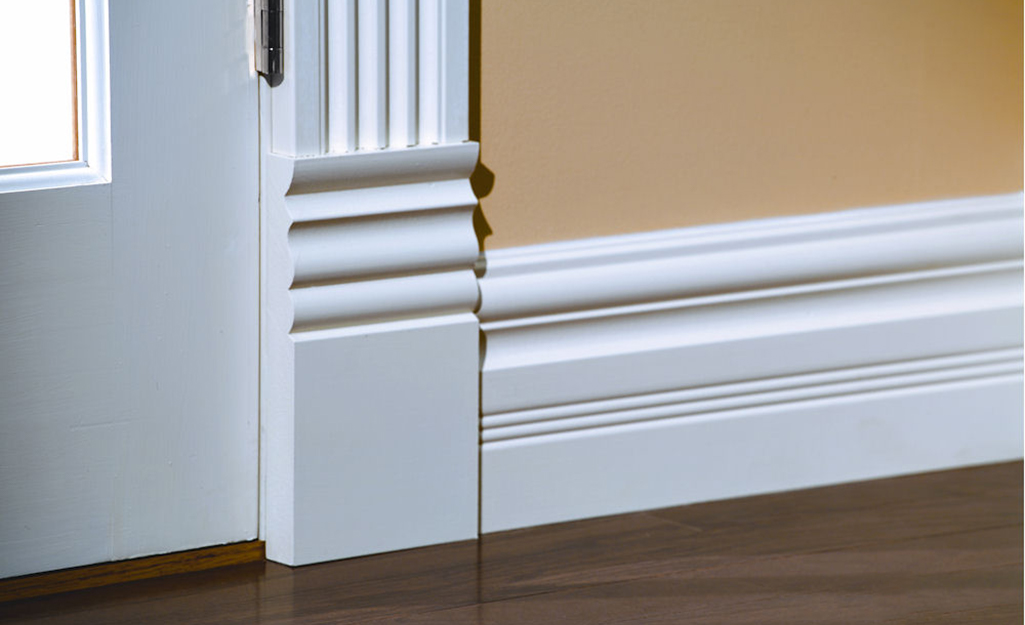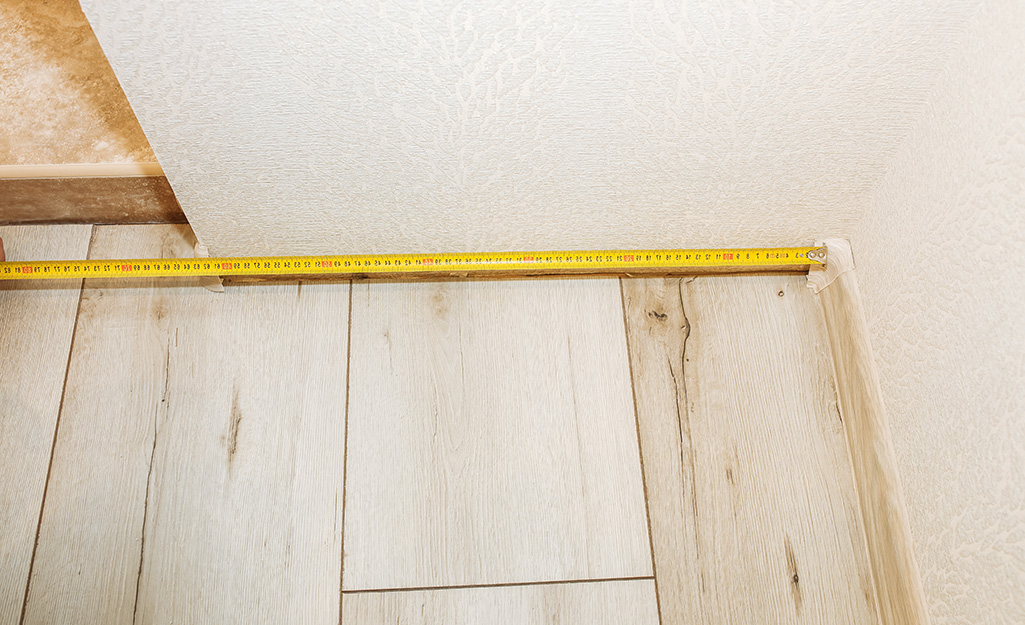Moulding Types

When deciding on a type of moulding for your home, it’s important to understand their purposes and differences, and how each type of moulding has a specific use. Let’s take a look at the most common moulding and trim types.
- Crown: Ceiling moulding, or crown moulding, softens the transition from wall to ceiling to create a visually stunning effect. The rule of thumb is the larger and taller the room, the wider the crown moulding. These can be as simple or as intricately detailed as your prefer.
- Casing or Architraves: Standard in most homes and made to conceal the gap between drywall and a door or window frame. The look will depend on your home style.
- Chair Rail: Meant to protect walls from furniture damage, chair rails are often installed for decorative purposes as they add a warmth and charm while protecting the walls from scuffs and dents.
- Handrails: Necessary for navigating stairways, these will differ depending on the style of your home.
- Baseboard: Standard in most homes, baseboards join the wall trim and the floor. They can be simple or ornate when coupled with quarter-round or other styles of trim. Baseboards are usually thinner than casings, but when both are selected, the result is a harmonious, cohesive look.
- Picture rails: A decorative option, picture rails are a type of moulding that is installed horizontally and used to display art or decorative plates. Similar to chair rails, picture rails can help prevent damage to your walls while adding style.
- Wainscoting: Decorative moulding, wainscoting can be installed between a baseboard and a chair or picture rail.
- Panel: Used to frame wall paneling and add a decorative touch to traditional wainscoting.
- Board and Batten: A wall trim piece used to cover the joints between two pieces of paneling.
Where to Use Moulding

While you can install trim in any room of your home, from living rooms to bathrooms, how and where it is applied will differ.
The applications of moulding are determined by position in the room during installation.
While certain mouldings and trim, such as baseboards and crown moulding, will flow throughout the house, decorative moulding like picture rails would primarily be used in specific areas like dining rooms.
Here’s a quick look at where to apply specific types of moulding in your home:
- Wall and Ceiling: Chair rail, panel moulding, wainscoting, picture rail and crown moulding.
- Floor: Baseboard moulding.
- Doors and Windows: Casing or architraves.
All of these types will be installed using nails and a hammer. Other tools you will need may include: a miter saw, finishing nailer, finishing nails, coping saw, hammer, tape measure, level, pencil and safety gear, such as goggles and gloves.
Moulding Materials

Moulding and trim can be made out of many materials, including foam, polyurethane and rubber; however, wood is the most popular choice.
The material you choose will depend on your home style and budget.
- Primed medium density fiberboard (MDF) is a high-grade composite material that typically comes pre-primed for a consistent, even-painted finish with superior workability.
- Primed pine is natural wood-based, paint-grade moulding that is also pre-primed.
- Pine is a versatile softwood moulding that can be clear-coated, stained or painted, and offers a warm, rustic look.
- Oak is a classic and traditional hardwood moulding with a distinctive grain pattern that can be clear-coated, varnished or stained and offers a durable, rich look.
- Polyeurathane is a high-density, lightweight material. It has the look of wood, but will not warp, split or rot, and is pre-primed for ease of install.
- PVC is a strong material that mimics the look of wood while ensuring protection from moisture. It also will not crack or chip.
Accessories

Corner blocks are functional and stylish accessories that will complement most moulding. Here are the most popular choices.
- Rosettes are corner blocks that are used for changing directions of mouldings that are the same size, such as at the top of a door or window.
- Plinth blocks are baseboards that are used to join profiles of different widths, such as when a wide baseboard joins a narrower door casing.
- Crown corners can be cut using a mitre saw or purchased preassembled. The preassembled inside and outside corner pieces simplify the installation process because you only have to cut butt joints to mate the lengths of crown moulding to the corner pieces.
- Divider blocks are decorative blocks used during installation so the moulding can be cut straight instead of scarfed or cut at a 45-degree angle.
- Intermediate blocks are also decorative blocks used during installation on straight runs of moulding so the moulding can be cut straight instead of making a scarf joint.
Moulding Tips

There are a few general things to keep in mind when choosing your type of moulding.
- Always measure the room for moulding before making a purchase. You’ll want to measure the length of each wall, making sure to calculate in any window or door openings. Then add 10 percent to the sum total for mitering.
- Buy about 15 to 20 percent more material than you need, just in case you miscalculated or you cut the wrong length.
- Crown moulding and baseboards are sold in 8-foot and 12-foot lengths. An average room with a 16-foot wall will typically use two pieces of moulding. Save any extra cuts to finish off any rough edges.
- Moulding and trim styles are available in traditional, country, Victorian, Arts & Crafts and modern looks. Choose a look that reflects your style, and when in doubt, opt for traditional.


5 comments
Etheridge
Hi there There. I discovered your site using msn. This is the very well prepared write-up. I will Make sure you bookmark it and return to read more of the handy data. Many thanks with the publish. I’ll certainly comeback.
http://movingtruckrental99999.ezblogz.com
Beamon
Soon after I initially still left a remark I seem to have clicked about the Notify me when new comments are extra checkbox and To any extent further each time a remark is additional I get 4 e-mail with the exact same remark. Maybe You can find a simple system you are able to remove me from that service? Many thanks a lot!
http://spafitness55038.isblog.net/the-definitive-guide-to-dampfer-shop-16856955
Renwick
Thanks for the great publishing! I definitely savored reading it, you is usually a great author. I will always bookmark your blog and unquestionably will come back someday. I choose to really encourage a person to continue your terrific posts, Possess a good morning! over here
Starns
Extremely delightful blog. I need to claim that you’re very sharp in producing on all matters. You’ve got actually pointed out many of the necessary elements on the picked matter. I take pleasure in the implies you make it and it’s a charming encounter reviewing each of the sentences. Many thanks for sharing your ideas as well as make certain to develop on distinct topics making sure that we go on enjoying your weblogs. As being a Online page writer, I likewise produce weblog sites on modern topics. My present weblog web page has to do with essentially the most current product of Clinical Qualified Out there. Be certain to evaluation it and also take a look at it to inform me concerning your analysis knowledge.
ELA
Muy interesante